하나의 이미지를 만들기 위해 박인성의 작품에 대하여
카리나 플라트 / 회화 및 조각 담당 큐레이터, 독일 하노버 스프렌겔 미술관
우리는 더 완벽한 영화가 아닌, 더 자유로운 영화를 필요로 한다. - 조나스 메카스(Jonas Mekas)
영화와 색채의 관계에 대해 이야기할 때 우리는 스탠 브락헤이지(Stan Brakhage)의 회화적이고 추상적인 영화나 1960년대와 70년대의 폴 샤리츠(Paul Sharits)의 강렬하고 다채로운 구성의 영화를 떠올릴 수 있을 것이다. 두 사람은 물질에 대한 근본적인 탐구와 영화의 특정한 형식적 특징에 초점을 맞춘 소위 구조주의 영화와 관련된 미국 영화 제작자 그룹에 속했다. 브락헤이지는 수작업으로 채색, 제작하는 영화의 대가가 되었고, 샤리츠의 영화와 영상 설치 작품은 개별 필름의 단위, 즉 추상적 화면으로 겹쳐지는 프레임의 강렬한 색채로 특징 지어진다. 샤리츠는 또한 필름 스트립을 스트레처 프레임과 캔버스에 감고 붙여서 필름 재료가 회화 재료로 변모하는 회화적 오브제를 만들었다.
오늘날 이러한 실험들은 대부분 영화 역사의 뒤편으로 밀려났고 예술적 전통으로서 경험되지는 못했다. 그들은 영화 박물관과 시네마테크의 틈새에서만 상영되며 대부분 디지털화되지도 않았다. 그러므로 폴란드의 영화 제작자 요제프 로바코프스키(Jozef Robakowski)와 같이 영상 작업을 통해 이러한 전통을 계승하는 영화 제작자들을 제외하고는 시각 예술 영역에 속하지 못했다.
아시아, 특히 일본에서도 생생한 흑백의 장면들을 다룬 타카히코 이이무라(Takahiko Iimura, 1937-2022), 영화 ‘스페이시(Spacy)’를 선보이며 거울로 채워진 복도를 연상케 하는 미로[i]와 같은 내적 공간을 통해 이미지 중복의 테크닉을 사용했던 타카시 이토(Takashi Ito*1956) 감독의 영화들은 추상 영화의 전통의 중요성을 보여 주었다. 그러나 이러한 전위적 경향은 대부분 잊혀지고 오락성에 치중하는 대규모 영화 산업에 의해 잠식되었다.
반면 박인성 작가의 가장 최근 작품들에서 관객은 영화적, 사진적 화면 이미지를 넘나드는 그의 예술적 실천을 접할 수 있으며, 이러한 다양한 매체의 물질성을 의도적으로 활용하고 있다는 것을 알 수 있다. 예를 들어, 폴리에스터로 제작된 그의 조각에는 필름 재료가 포함되어 있고, 캔버스 작품 또한 셀룰로이드 재료와 유화 물감이 혼합되어 있다. 그의 사진 작품들은 확대되어 회화적 크기로 변모하며 캔버스의 담론으로 이끈다.
작가는 1920년대와 1930년대의 세르게이 M. 아이젠슈타인(Sergei M. Eisenstein)과 지가 베르토프(Dziga Vertov)의 아방가르드 영화가 영화 언어의 추상성 탐구에 있어 중요했다고 설명한다. 그는 오손 웰즈(Orson Welles)의 시민 케인(Citizen Kane, 1941), 장-뤽 고다르(Jean-Luc Godard)의 영화, 1950년대와 60년대 이탈리아 신사실주의(Neo-realism) 영화 등이 그에게 영향을 미쳤다고 언급한다.
이는 1920년대부터 1970년대까지의 추상적 구성, 영화적 몽타주, 빛과 트래킹 샷 실험으로 이어지는 영화적 추상 전통을 참조한다.
동시에 작가는 1930년대 초기 아방가르드 시각 언어의 지속성에 불만을 느꼈다. 뉘른베르크(Nuremberg)에서 수학하던 중 알게 된 나치 독일 선전 영화를 홍보한 레니 리펜슈탈(Leni Riefenstahl)의 경우가 그 예이다. 이념상 진보적이고 민주주의적 측면에서 계몽적이라는 추상 영화 언어에 대한 해석이 실은 왜곡된 것이었다. 회화적 언어와 재현 간의 상호 연결성 역시 분명해 졌으며 의문을 던질 만한 것으로 드러났다.
지그프리드 크라카우어(Siegfried Kracauer)와 마샬 맥루한(Marshall McLuhan)과 같은 초기 저자들은 매체, 의미 전달의 형식으로서의 영화에 대해 광범위하고도 비판적으로 저술하였다.[ii] 그럼에도 우리는 여전히 소셜 미디어에 의해 더욱 강조되는 이미지들의 기만 현상을 계속해서 관찰, 비판하고 있다. ‘우리가 스스로 알고 있다고 믿는 것을 어떻게 알 수 있는가’라는 질문은 회화 및 미디어 과학뿐만 아니라 우리의 일상적인 미디어에 대한 경험에서도 중요한 화두로 떠올랐다.
이 질문은 회화와도 관련이 있다. 회화가 자연을 재현하고 이상향을 제시해야 한다는 주장은 정당성을 잃었다. 회화가 사진과 디지털 원천으로부터 유래되면서 사진의 출처도 불확실 해졌다. 박인성 작가는 이러한 원인과 회화적 효과를 해제하며 그로부터 얻어진 자유를 자신의 작업에 활용한다. 오늘날 디지털 미디어와 인공 지능에 대한 논의의 배경 속에서 그의 작품은 재료를 다루는 기술적 능력, 장인 정신의 측면으로 인해 오히려 보수적으로 보일 수 있다. 그는 여전히 물성을 강조하며 알고리즘에 넘기지 않는 미적 결정을 내린다.
정교한 회화적 제작 과정 속에서 그는 사진의 파편을 분리하고 확대하며 잘라 내어 2019년부터 2021년까지의 ‘필름(Films)’ 시리즈에서 보여 준 바와 같이 새로운 작품을 만들어 낸다. 이 과정은 특유의 표시가 있는 콘택트 시트의 가장자리를 통해 작품 위에 가시화된다. 또한 그는 카탈로그 속 도표를 통해 작품의 과정을 드러냄으로써 신비스러움을 걷어 내고 보다 객관적이고 소박한 접근법을 제시한다. 이러한 소박한 예술성은 주관적인 측면보다 객관화할 수 있는 측면을 더 강조하는 만큼 그의 예술성이 드러나는 기술에 근접하는 것이다.[iii]
디지털로 생성된 이미지의 물질적 사용을 통해 박인성 작가는 예술을 디지털과 아날로그 간의 새로운 상호작용으로 안내한다. 그러나 이번에는 양측이 뒤바뀐 것처럼 보인다. 디지털 이미지가 아니라 무게와 오브제로 제시하는 새로운 물리적 작품인 것이다. “디지털 세계가 무게와 그림자를 잃고 있다" 라고 그가 관찰한 바와 같이 그의 작품은 무게도, 그림자도 없는 환경에서 관객으로 하여금 다시 한번 촉각적 경험을 하게 하려는 시도로 읽힐 수 있다. 이는 우리가 점점 더 직면하게 되는 긴장을 반영한다. 육체적 움직임을 제한시키며 중력에서 해방되는 가상 세계에서 점점 더 많은 시간을 보내는 탓에 진정한 경험에 대한 욕구가 더 커지고 있는 것이다. 이는 어린 시절과 대도시 근교 시골에서의 삶에 대한 향수, 목재와 섬유를 기반으로 작업의 장인적 재능을 향한 새로운 열정, 그리고 예술과 공예의 접목 등을 포함한다.
더욱이 박인성 작가의 그림과 조각은 투명성과 불투명성에 관한 유희이다. 필름 재료의 투명한 셀룰로이드는 색을 생성하지만 아무것도 묘사하지 않기 때문에 해석이 불분명하다. 폴리에스터 레진을 부어 만든 조각에는 재료의 접힘으로 인해 표면의 조각만이 드러나는 부분이 존재한다. 그들을 드러내기 위해 작가는 목재나 금속으로 정교한 받침대를 만들었고 이러한 복잡한 형태를 통해 그는 이렇게 이해하기 어려운 것들을 시연하는 측면을 강화하였다.
반면, 이러한 난해함은 명확하고 특별한 물질성과 색채의 차원이 중요해 진다는 것을 의미한다. 투명한 색과 우유 같은 색, 생생한 대비 간의 교차, 합성 수지, 나무, 금속 및 천 사이의 촉각적 변주, 그리고 확대, 자르기 및 겹치기 등의 절차는 모두 박인성의 그림과 오브제에 감각적 다양성을 부여한다. 그는 작은 형식의 ‘인스케이프(Inscape, 2023)’ 시리즈에서부터 지름 92cm의 원형의 ‘케이스(Case, 2023)’, 그리고 지난 해 완성한 대형 작품에 이르기까지 다양한 형식을 선택하며 각각의 구체적 효과를 고려한다. 출발점이 되는 이미지인 드로잉, 포토 그램, 스캔, 그리고 캔버스 위의 물감 등의 다양한 기법이 서로 얽혀 있는 것이다. 2020년작 ‘흩날려서 팔강이 되었다(It Scattered and Turned Red)’에서는 색이 투사된 이미지들의 교차를 통해 매체의 차이의 효과를 공간에 반영시켰다. 과정 중심적 특성을 갖는 그의 그림은 그 풍부한 특질이 2022년작 ‘박제된 순간들(Stuffed Moments)’과 같이 제목으로 나타나기도 한다.
올해 그의 가장 최근작은 표면을 처리하는 다양한 방식들. 이를테면 압축하거나 겹치는 등의 행위를 통해 그들이 작품으로 진화하는 역사에 관해 증명해 준다. 인화된 이미지 위에 에폭시 레진(epoxy resin)으로 덮는 방식이 사용된 2024년작 ‘상사화(Lycoris Squamigera)’는 독일어로 “서프라이즈 릴리(Surprise lily)”라고도 불리는 백합의 일종을 가리키는데 무(無)에서 유(有)가 창조되듯 봄에 갑자기 자라고 빠르게 꽃을 피우는 것처럼 보인다. 레진의 사용, 부어 넣는 방식을 통한 작품의 제작, 그리고 곧 솟아 오를 듯 보이는 섬처럼 표현된 표면의 투명성으로 인해 이 그림들은 필름 재질의 시각적 특징과 유사성을 보인다.
다양한 매체의 발전을 이용하는 박인성 작가의 작품의 혼성적 특징은 일상적이고 다층적인, 끊임없이 변화하는 우리의 지각을 전달한다. 다소 실험적인 태도를 취한다고 하더라도 그는 관객에게 확신을 줄 수 있는 형식을 반복적으로 찾아낸다. 그 이미지들은 마치 우리 인생의 흐름과도 같이 시간의 경과에 따라 지나쳐 가는 일시적인 형태를 취한다. 그럼에도 불구하고 그들은 돌이켜 보았을 때 중요한 순간이었음을 증명해 주며 우리 기억 속에 분명히 각인된다.
------------------------------------------------------------------------------------------------------------------------------------------------------------------------------------
[i] T,O,U,C,H,I,N,G, 인식과 영화(Wahrnehmung und Film, 카리나 플라스(Carina Plath) 편집, Westfalishcer Kunstverein, Munster 2010) 참조
[ii] 마샬 맥루한(Marshall McLuhan)의 ‘미디어의 이해(Understanding Media, 1964), ‘매체는 메시지이다: 효과의 목록(The Medium is the Message: An Inventory of Effects, 1967), 지그프리드 크라카우어(Siegfried Kracauer)의 영화 이론(Theory of Film, 1960) 참조
[iii] 정빈나 에세이 “박인성의 스캔그래피(Scangraphy)로 묘사된 정서적 이미지의 변화와 회화에 관하여”, 경주 솔거 미술관 박인성 전 ‘달의 저편(The Far Side of the Moon) 참고


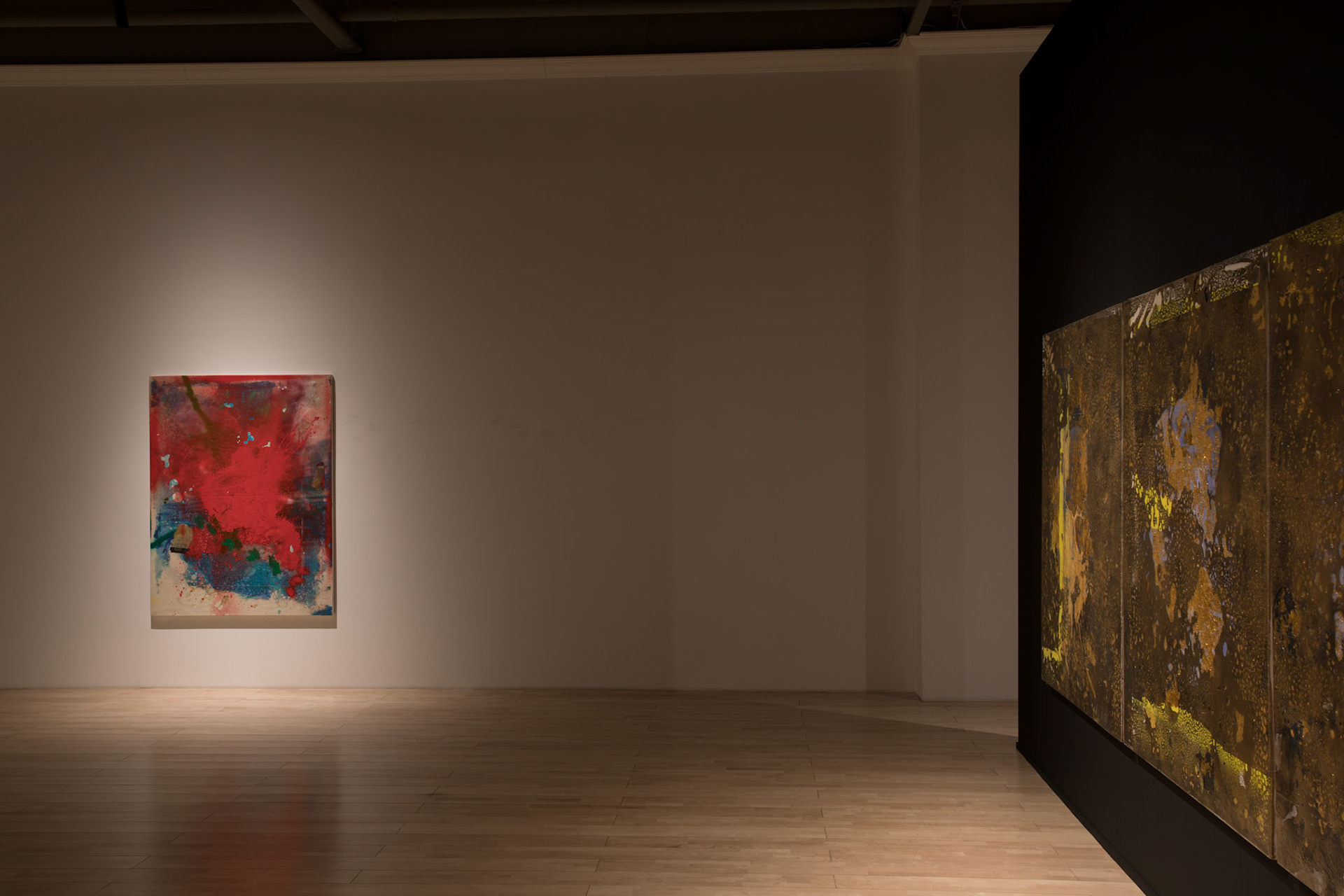






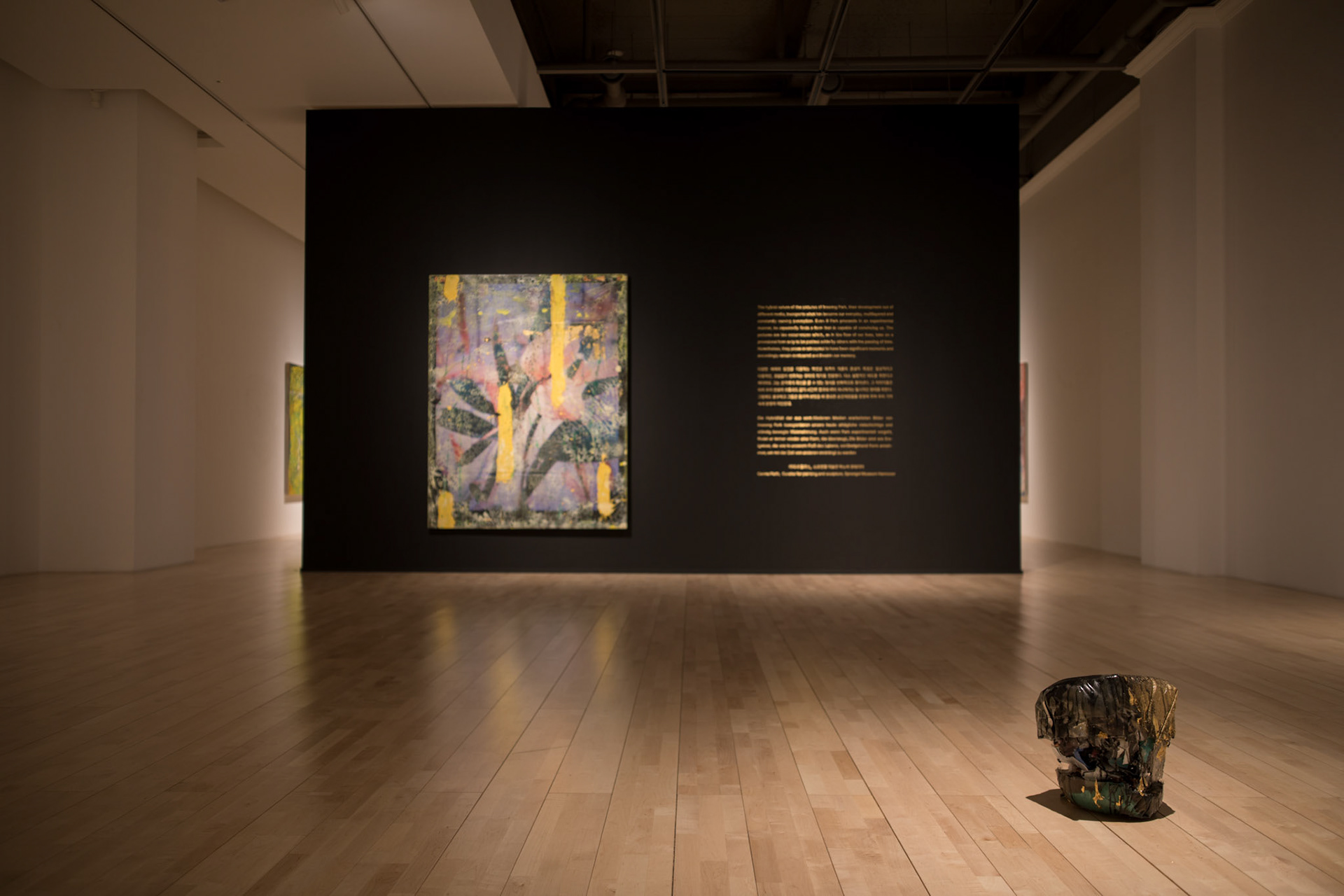
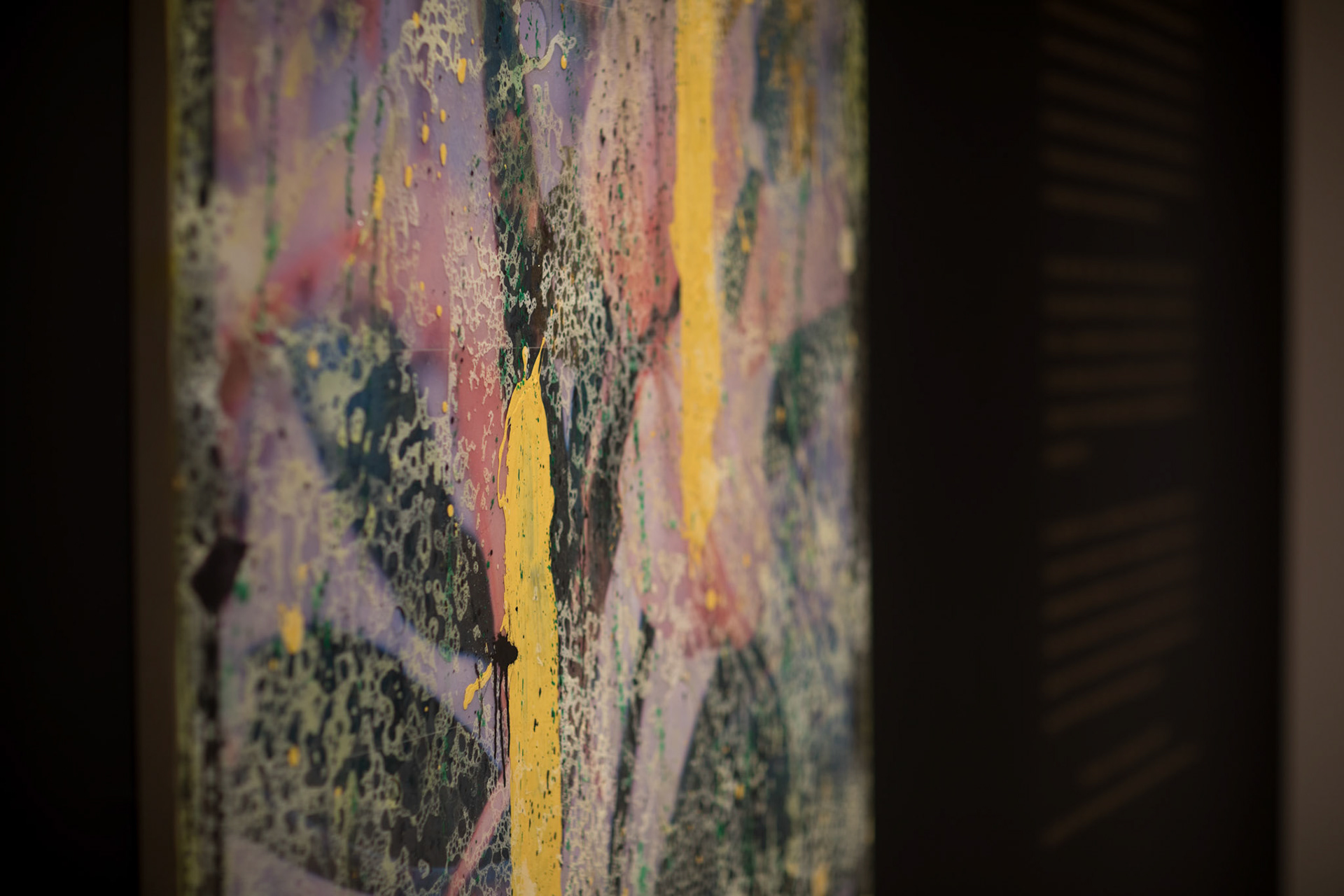

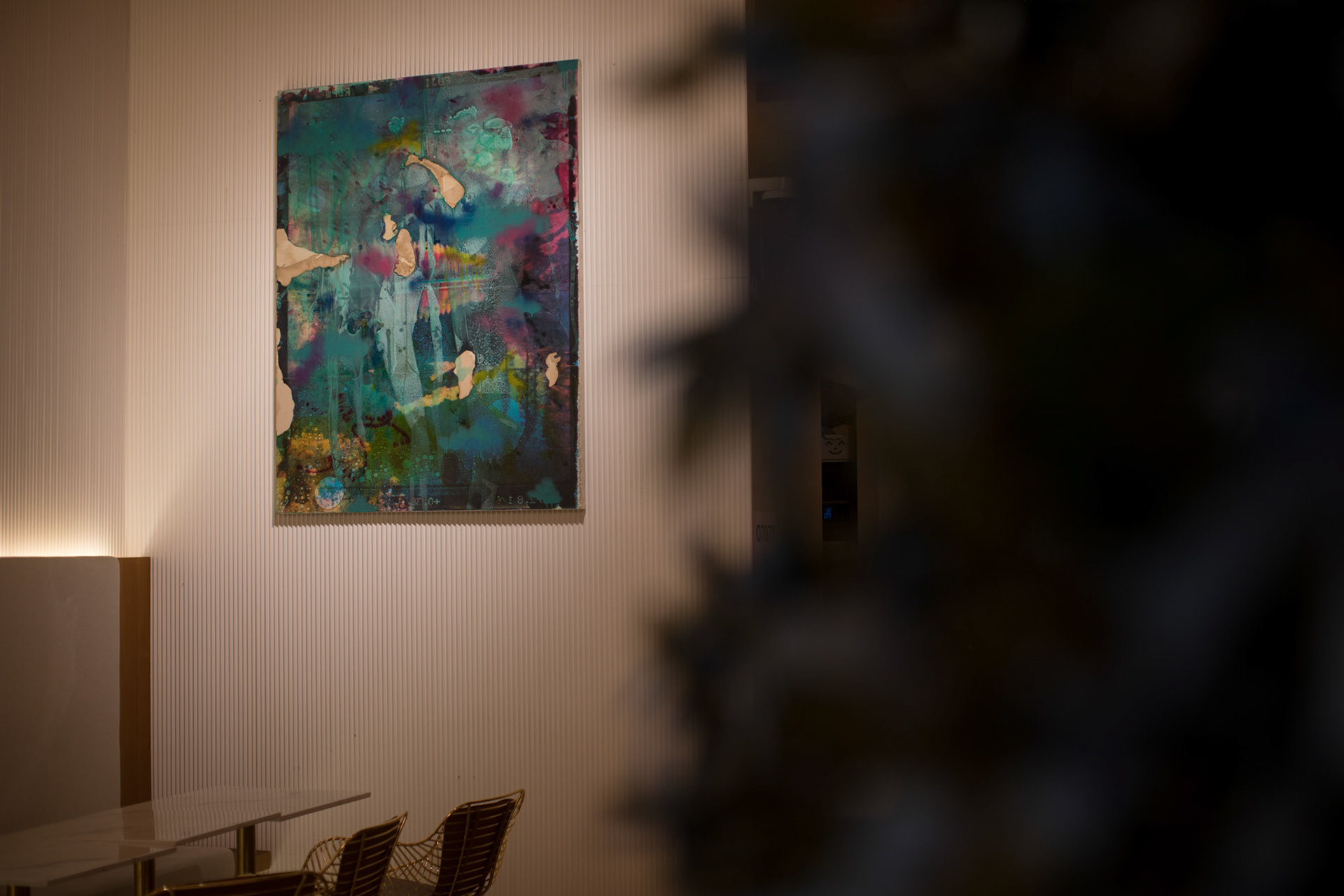










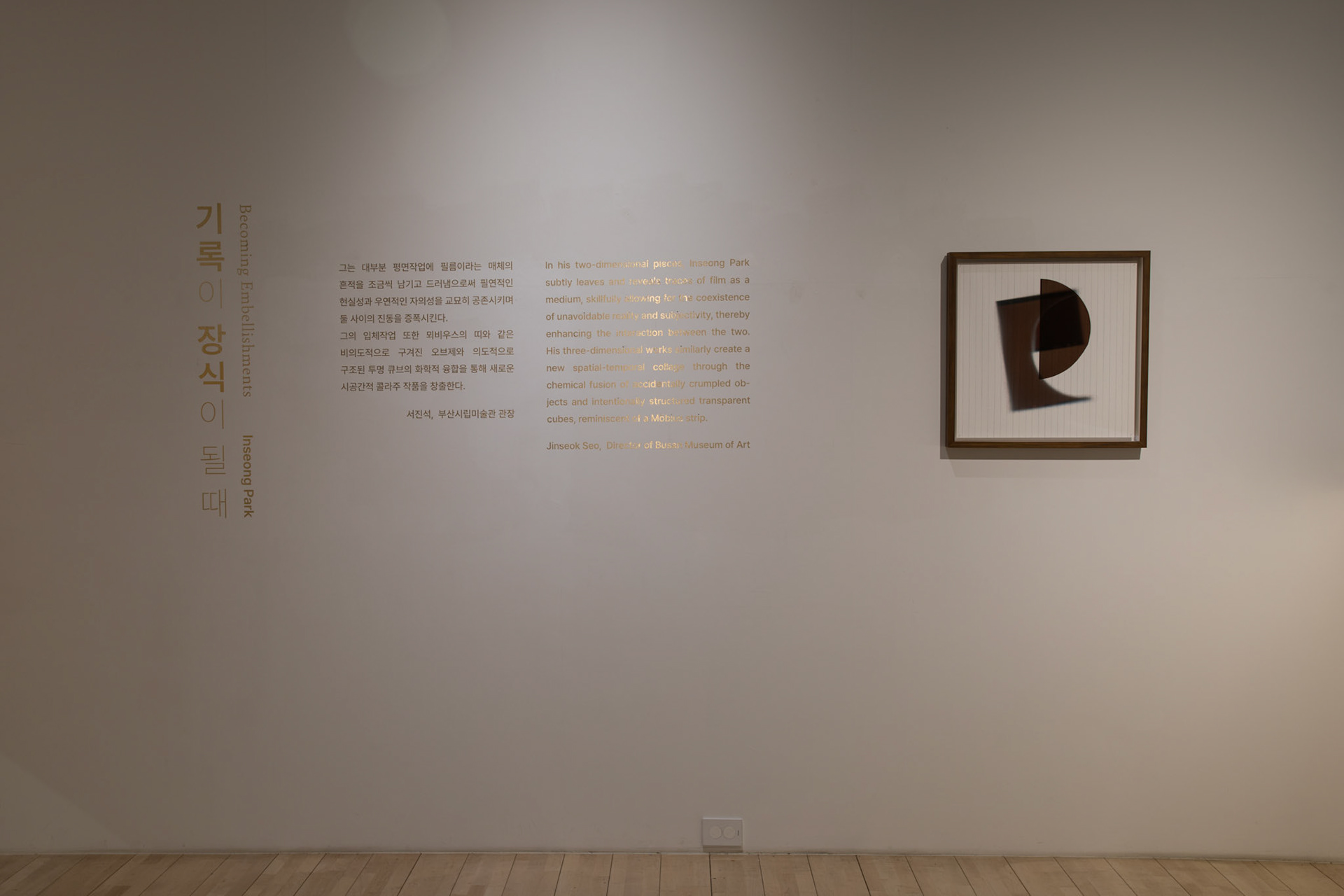



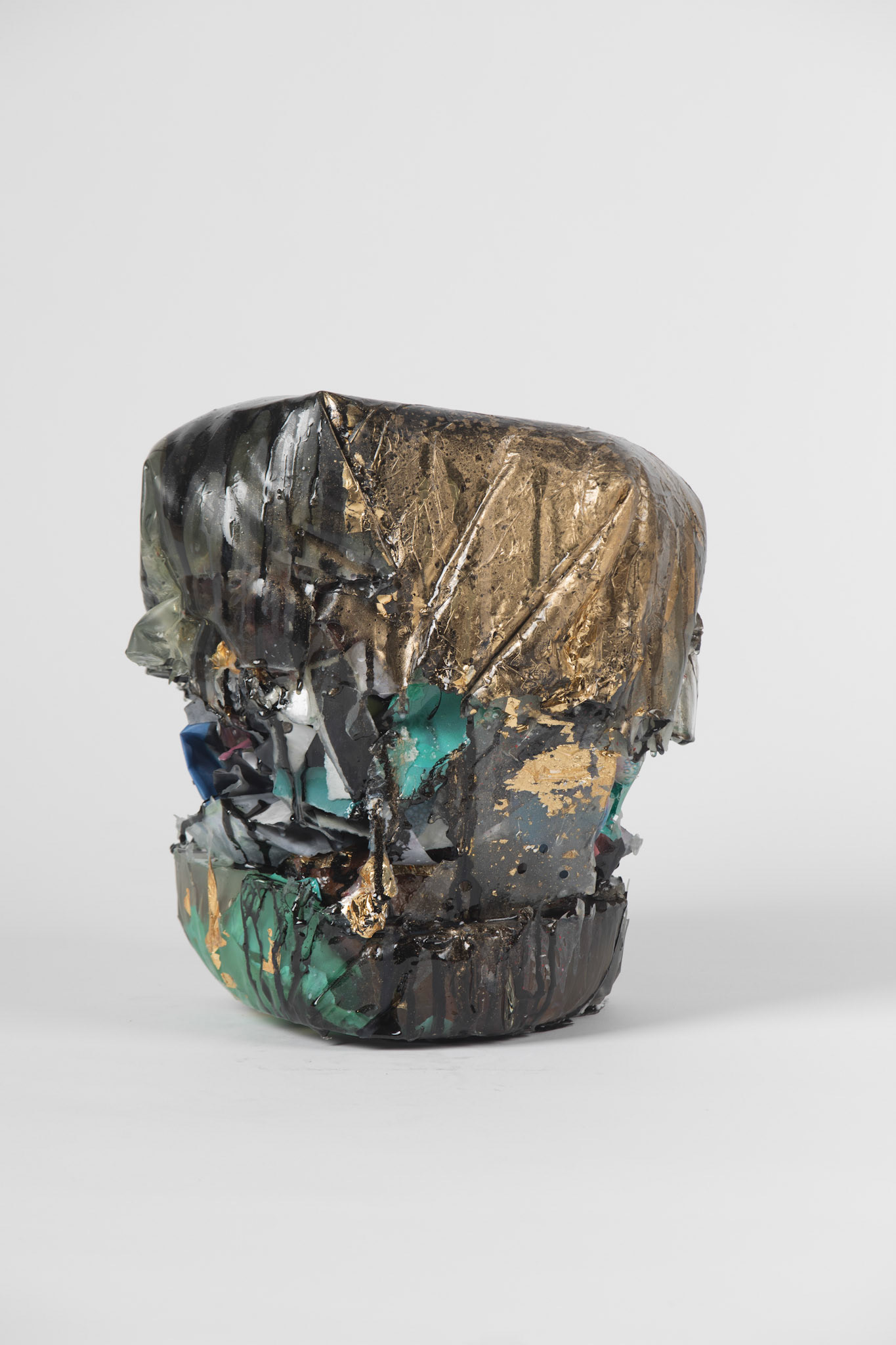



To Create An Image
On the Works of Park Inseong
Carina Plath / Curator for painting and sculpture, Sprengel Museum Hannover
We need less perfect but more free films.
—Jonas Mekas
When there is talk of the connection between film and color, one thinks immediately of the painted, abstract films of Stan Brakhage or the intensive, colorful composition of the films of Paul Sharits from the 1960s and 1970s. The two belonged to the group of American filmmakers associated with the so-called structural film, which focused on a fundamental investigation of the material and on the specific characteristics of film. Whereas Brakhage became a master of the hand-colored film, Sharit’s films and film installations are characterized by the intensive coloration of the individual filmic units, namely the frames, which were combined into abstract sequences. Sharits also created out of strips of celluloid pictorial objects in which he wrapped and glued filmstrips onto stretcher frames and canvasses—whereby filmic material became pictorial material.
Today these experiments have for the most part been relegated to film history and have scarcely been experienced as an artistic tradition, inasmuch as they are only shown in niches of film museums and cinematheques; moreover, most of them were never digitalized. Hence they have seldom found a place in the area of the visual arts, with the exception of artists who continue this tradition in their videos, one example being the Polish filmmaker Józef Robakowski.
In Asia, especially in Japan, there was likewise an important tradition of the abstract film, such as the films of the director Takahiko Iimura (1937-2022), who worked with vividly structured black-and-white sequences, or the films of Takashi Ito (*1956), whose Spacy (1981) already made use early on of the technique of the redundancy of images through inner multiplication in labyrinthine filmic experiences reminiscent of halls of mirrors.[1] But these avant-gardes have for the most part been forgotten and massively overwhelmed by the large film industry dedicated to entertainment.
In the most recent works of Inseong Park, one encounters on the other hand an artistic practice which moves between filmic, photographic and screen images, and which makes deliberate use of the materiality of these various media. For example, his sculptures done in polyester contain poured-in film material, and his pictures on canvas mix celluloid material with oil paints. In turn, his photographically created works have been zoomed up into pictorial size and enter into a discourse with the canvasses.
The artist has explained that the avant-garde films of the 1920s and 1930s by Sergei M. Eisenstein and Dziga Vertov were important for his investigation of abstraction in filmic language; he cites as further influences Orson Welles’ Citizen Kane (1941), Jean-Luc Godard’s films, and the cinema of Italian Neorealism from the 1950s and 1960s.
Reference is thereby made to a filmic tradition of abstraction extending from the 1920s to the 1970s and involving abstractly composed focusings, filmic montages, and experiments with light and tracking shots.
At the same time, Park was irritated by the continuation of the visual language of the early avant-gardes in the 1930s: for example, in the case of Leni Riefenstahl, whose films promoting National Socialist, German propaganda he encountered during his time of studies in Nuremberg. In this instance, the interpretation of abstract filmic language as ideologically advanced and democratically enlightening was corrupted. At the same time, the interconnection between pictorial language and representation had become explicit and questionable in equal measure.
Early on, the writings of authors such as Siegfried Kracauer and Marshall McLuhan directed an extensive and critical reflection towards film as a medium and as a conveyor of meaning.[2] And yet we continue to observe and to criticize the phenomenon of deception through images, a tendency that has been amplified further by social media. The question as to how we can know what we believe ourselves to know has become a central issue in the pictorial and media sciences as well as in our everyday experience of the media.
This question is also relevant to painting, which long ago lost justification for laying claim to being a faithful rendition of nature and presenting an idealistic truthfulness. Inasmuch as painting has come in the meantime to be derived from photographic and digital sources, the provenance of the picture has also become uncertain. Park Inseong proceeds from this uncoupling of cause and pictorial effect by making use for himself of the thereby-attained freedoms.
Against the background of today’s digital media and the discussion about artificial intelligence, the works of Inseong Park seem almost conservative, inasmuch as they continue to arise out of a manageability and craftsmanship in handling materials. Park is still or once again an artist who works with the material and makes aesthetic decisions which he would scarcely be inclined to hand over to an algorithm.
In the elaborate processes of his pictorial production, he separates fragments of a picture, enlarges them, cuts them, and creates out of the pieces new pictures, as in the series of Films done from 2019 to 2021. The procedure remains visible on the pictures through the edges of contact sheets with their typical markings. Moreover, through a diagram in the catalogue he brings to light his procedure, which does not remain a mystery but instead proves to be an objective and plausible approach. This unpretentious artistry is situated in proximity to the technology with which it works, inasmuch as it gives stronger emphasis to objectifiable than to subjective aspects of his art.[3]
Through the material use of digitally created images, Park ushers art into a renewed interplay between the digital and the analogue; but this time, the sides seem to have been reversed. It is not the digital image but instead the newly created, material work which presents a weight and an object. Inasmuch as in conversation the artist observes that the digital world “is losing weight and shadow,” his works can also be read as the attempt, in surroundings that have become so weightless and shadowless, to once again have haptic experiences which he makes available to others.
This reflects the tension with which we increasingly find ourselves to be confronted: Because we spend more and more time in virtual worlds that release us from gravity even as they deprive us of physical movement, there is a growing desire for genuine experiences. This includes a certain nostalgia for the days of childhood and for a life in the countryside near large urban centers, as well as a new enthusiasm for artisanal talent, for works based on wood and textiles, and also the crossover between art and handicraft.
Furthermore, the pictures and sculptures of Park Inseong play with transparencies and opacities. The transparent celluloid of the film material gives rise to colors, but it maintains a hermeneutic impenetrability, inasmuch as it does not depict anything. Poured into the sculptures made of polyester resin are parts which, because of the foldings in the material, only yield fragments of the surface. In order to present them, the artist created especially elaborated pedestals out of wood or metal. Through these complex forms, he enhances the aspect of a demonstrative showing of something that cannot be fathomed.
On the other hand, this illegibility means that the dimensions of an explicit and special materiality and coloration increase in importance. The alternation between transparent and milky colors and vivid contrasts, the haptic variations between synthetic resin, wood, metal and cloth, and such procedures as zooming out, cutting and layering all contribute to the sensory variety in the pictures and objects of Park Inseong. He selects diverse formats—from the small formats of the series Inscapes past the circular Cases measuring 92 cm in diameter (both works from 2023) all the way to the large formats of this past year—with regard to their specific impacts. A large number of techniques applied to the image serving as point of departure—whether a drawing, a photogram, a scan or a canvas with paint—are interwoven. In 2020 through the cross-fading of the presented images with colored video projections in It scattered and turned red, the differentiation of the media became an overflowing spatial work of art.
In their processual nature, Park’s pictures become events whose quality of abundance is in some cases indicated by the titles, as with the series Stuffed Moments from 2022.
The most recent works from this year offer demonstrative evidence regarding the history of their evolution into pictures through acts of pressing and layering as well as through different ways of treating their surface. Printed paper is glued onto canvas and covered with epoxy resin, as in the picture 2407005 Lycoris Spamigera from 2024, whose title refers to a type of lily also called “surprise lily” in German, because in springtime it grows and blooms quickly, as if out of nothingness. Through the use of resin and the production through pourings, as well as through often-arising, plastic-resembling islands and transparencies, these pictures evince similarities to the optics of filmic material.
The hybrid nature of the pictures of Park Inseong, their development out of different media, transports what has become our everyday, multilayered and constantly moving perception. Even if Park proceeds in an experimental manner, he repeatedly finds a form that is capable of convincing us. The pictures are like occurrences which, as in the flow of our lives, take on a provisional form only to be pushed aside by others with the passing of time. Nonetheless, they prove in retrospect to have been significant moments and accordingly remain contoured and fixed in our memory.
------------------------------------------------------------------------------------------
[1] See T,O,U,C,H,I,N,G, Wahrnehmung und Film, edited by Carina Plath, exhib. cat. Westfälischer Kunstverein, Münster 2010.
[2] Doubtlessly of primary importance are the writings of Marshall McLuhan, Understanding Media (1964) and The Medium is the Message: An Inventory of Effects (1967) and Siegfried Kracauer, Theory of Film (1960).
[3] See the excellent essay by Jeong Binna, “Regarding the Changes and Painting of Mental Images Depicted by the ‘Scangraphy’ of PARK Inseong,” in Park, Inseong, The far side of the moon, exhib. cat., Solgeo Art Museum, Gyeongju, Korea. pp. 10-12.